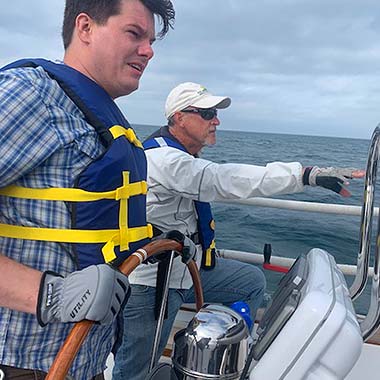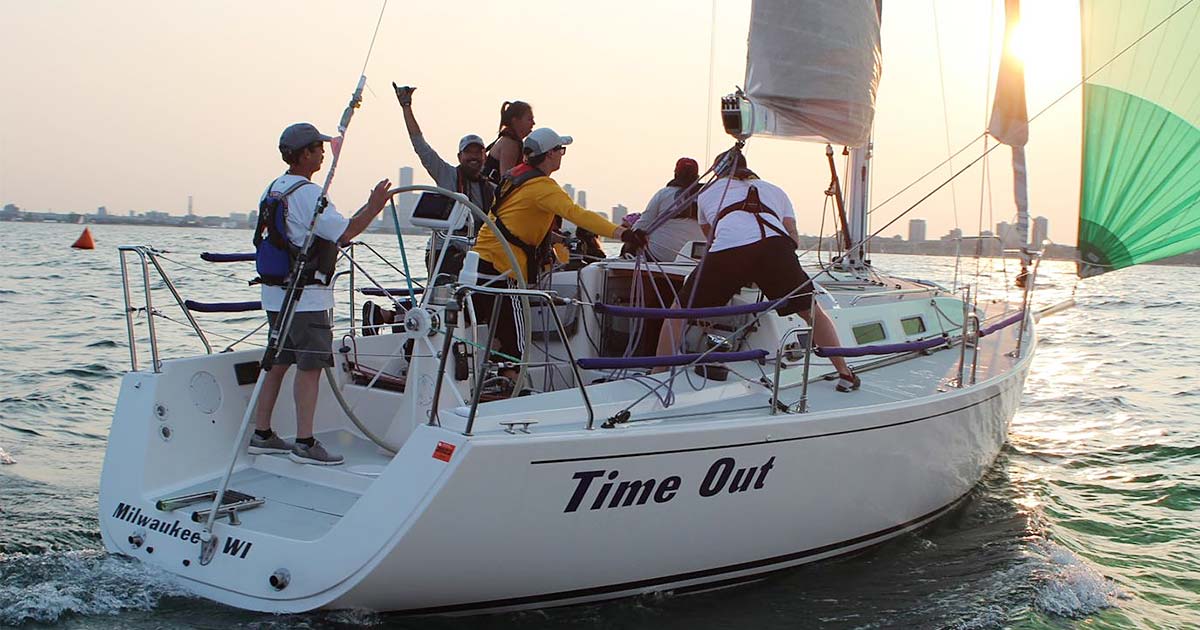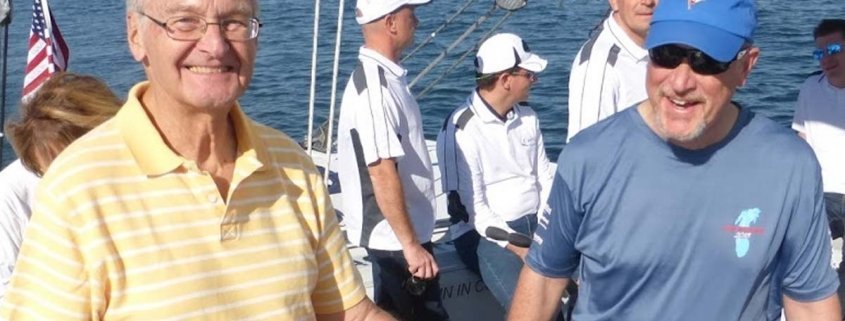I have always been a fan of Patrick Lencioni’s business books. They have been a valuable resource in helping teams coalesce and connect at deep levels. A challenge with using these books arises when a business leader is unable to separate themselves from the problems in the business unit. They fail to facilitate a discussion without bias.
Looking at the antithesis of concepts in these resources provides some of the best solutions. Let’s look at how to move from the “Five Dysfunctions of a Team” to the “Five Essentials of a Team”, developed by Dr. Scott Gostchock and our colleagues at Partner2Learn. This paradigm shift leads to teams working from their strengths which puts them on course to reach their mission and vision. These concepts prove to be true both on the land and the sea.
The Recipe for Dysfunction
Lencioni’s recipe for team dysfunction has five steps. The symptoms and signs of dysfunction can be seen in many ways.
- Absence of trust among team members. This step in the recipe arises from their unwillingness to be vulnerable within the group. Team members who are not open with one another about their mistakes and weaknesses make it impossible to build a foundation for trust and lead to a manifestation of a lack of vulnerability where no one is ever wrong or needs help (other team members).
- Failure to build trust is detrimental because it sets the stage for the second step or ingredient of dysfunction: fear of conflict. Teams that lack trust also lacks the ability to engage in unfiltered and passionate debate of ideas. Rather than facing the conflict, they resort to talking behind each other’s back or put on a false sense of agreement and happiness. This is called artificial harmony – where everyone nods their head yes in a meeting and then talks bad about everyone else in the parking lot.
- Lack of commitment. A lack of healthy conflict is a problem because it ensures the third step in the recipe of dysfunction: lack of commitment. When team members fail to share their opinions in the course of open debate, team members rarely, if ever, buy-in and commit to decisions. While they may say they agree during meetings, a lack of sharing leads to ambiguity where no one owns any decision.
- A lack of accountability. Because of this lack of real commitment and buy-in, team members develop a lack of accountability which is the fourth step in the recipe of dysfunction. By not committing to a clear action plan, team members hesitate to call their peers on actions and behaviors that seem counterproductive to the well-being of the team and manifests in low standards for the whole team – if one member of the team is late for meetings soon all members will be late for the meetings.
- Inattention to results. This situation happens when team members put their own needs (such as ego, career development or recognition), or even the needs of their divisions, above the collective goals of the team. It all becomes what I did and not what we did.
The Five Essentials Explained
The 5 essentials for building effective teams come to life under the sail.
1. Building Trust
Building Trust is the first essential in strong teams that are on course to reaching their mission and vision. We define trust as: “confidence among team members that their peers’ intentions are good, so you can be vulnerable with one another.”
Trust is built when team members make and receive prompt apologies. It is built even further when members can acknowledge and tap into their strengths while admitting weaknesses and mistakes. Deep trust happens when we take the time to truly get to know and appreciate each other. These foundations of trust can be seen in any office across the business world.
The lack of these foundations shows up even more quickly on a sailboat at sea. I have seen crew members foul lines, break parts of a boat, and cause injury to other crew members.
When prompt apologies and admission of the error is made, trust can be restored and grow. I have seen people destroy parts of a boat then act like it was someone else’s fault. This does nothing but destroy the spirit of the team. The key is to build vulnerability-based trust on the foundations of leadership integrity, carrying out multiple follow-throughs, and creating shared experiences.
2. Growth Through Positive Conflict
Growth through positive conflict is the second essential of teams on course to accomplish their mission. We define positive conflict in the formula of MV2 + I2. This formula is a simple way to remember positive conflict must be based on mission, vision, values and focused on issues and ideas. The five steps to positive conflict are:
- demonstrating passion and openness in team discussion
- voicing opinions even at the risk of causing disagreement
- empowering to share opinions during meetings
- holding compelling meetings;
- and discussing important ideas.
Some of the best race crews in sailing regattas are those where the crew can openly debate tactics with the skipper and not face reprimand or replacement on the team. Boats that place near the bottom of regattas are often those where conflict destroys the well-being of the crew and skippers. When this happens, there is often a high degree of turnover which makes winning even more difficult. The cost of turnover in business often goes back to how conflict is managed.
3. Constructing Commitment
Constructing commitment is the third essential of a team on course to reach its mission. When a team develops commitment, they achieve clarity and buy-in as the primary outcome of the process. As debate ends on an issue, there are specific resolutions and calls for action. The benefits that follow commitment are easy to see especially as they lead to the next essentials of accountability. Commitment is vital when it comes to teams on land or on a sailboat. Team members need to feel like their fellow crew members have the same commitment and will have their back in case of an emergency or crisis. Trust increases as buy-in and commitment grow which further expands the foundation of the team.
4. Accountability
Accountability is the next essential component of solid teams. An atmosphere of accountability allows team members to challenge one another about their plans and approaches in light of the mission. With greater accountability, there is a greater desire not to let fellow crew members down. Crew members can openly address one another’s deficiencies or unproductive behaviors.
I have seen unhealthy teams both on land and on racing crews where the lack of accountability led to lower levels of engagement and unhealthy conflict. When you know that someone is holding you accountable to execute a tack or jibe in a race, you want to perform for the good of the team. The crew member that fails to hold themselves accountable soon causes strife among the rest of the crew and becomes a dangerous asset on the boat. Holding people accountable allows us to engage in the highest form of praise.
5. Results
The final essential of a team is results. Whether the result is measured in sales won, reducing costs, or winning sailing regattas, results do matter. When teams focus on results, members are willing to make sacrifices for the good of the team. On the flip side, morale is significantly affected by the failure to achieve team goals. As a team produces results, they strive to maintain a reputation for high performance. They also achieve their objectives more consistently.
It is what John Maxwell calls “The Big Mo” which describes the momentum that builds and drives us to results. Sales teams seek momentum and results. Sailing teams that get a taste of victory want to compound their winnings. In the end results do matter.
Begin Your Journey towards Strong Team Building
Let’s work on building teams that work from their strengths to reach their mission. When we focus on the five essentials of a team, we enhance the shared language, trust and respect in your organization. Your team will truly be unstoppable in what they can achieve. The journey starts with a complimentary team review. Contact us for a free 30-minute consultation to learn how you can get started today.

 (c) 2020 Full Sail Leadership Academy
(c) 2020 Full Sail Leadership Academy (c) 2019 Full Sail Leadership Academy
(c) 2019 Full Sail Leadership Academy What is taught on the seas, must be taken back to the workplace and reinforced. I have seen sailors who came back to sail after handling 10-15-foot waves and seasickness who failed to make the resilience connection in the office until they went through follow up coaching.
What is taught on the seas, must be taken back to the workplace and reinforced. I have seen sailors who came back to sail after handling 10-15-foot waves and seasickness who failed to make the resilience connection in the office until they went through follow up coaching. (c) 2019 Full Sail Leadership Academy
(c) 2019 Full Sail Leadership Academy
 (c) 2019 Full Sail Leadership Academy
(c) 2019 Full Sail Leadership Academy